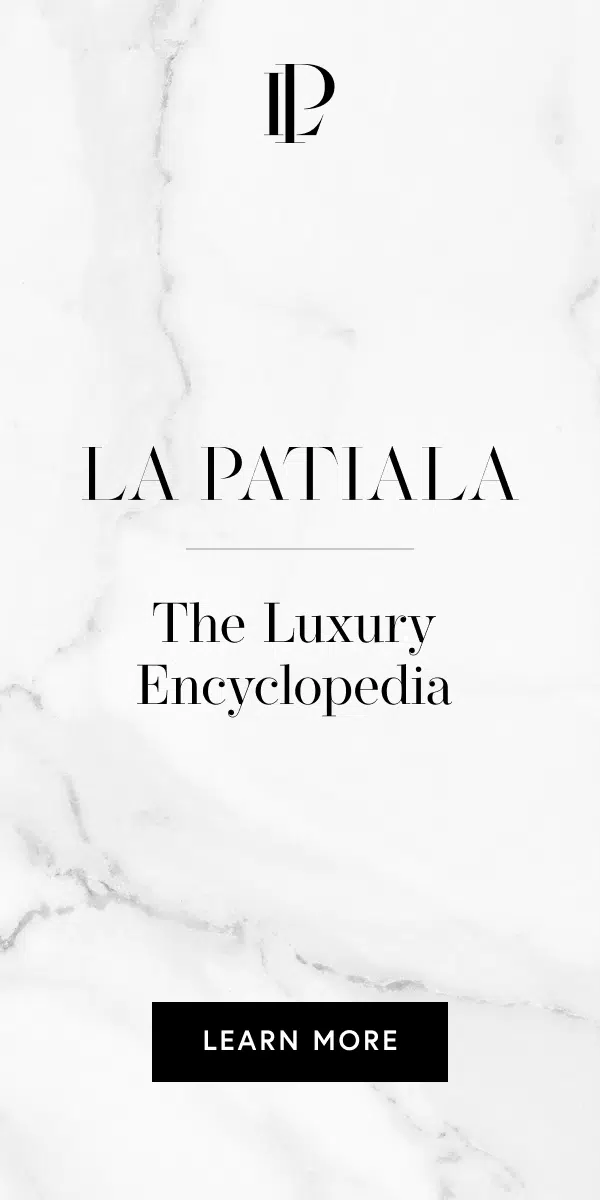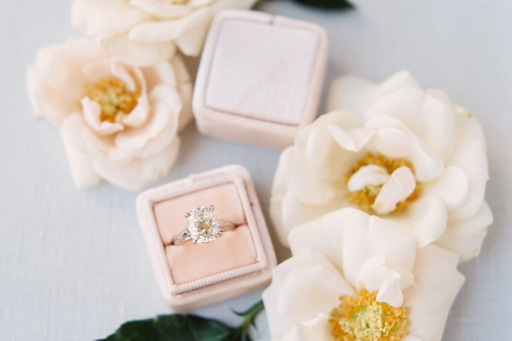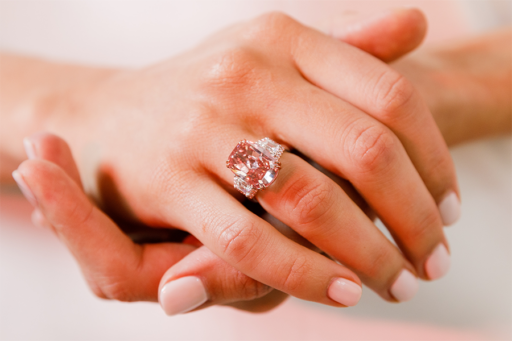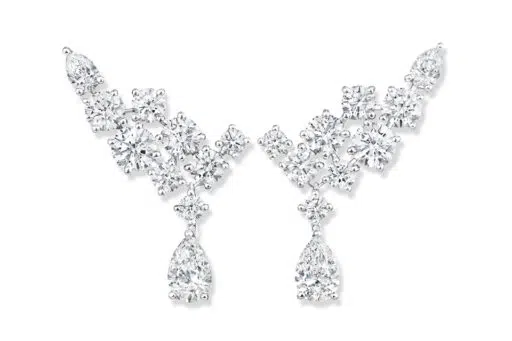Why Are Diamonds So Expensive?
There’s a lot of misinformation out there about natural diamonds, including why diamonds are so expensive. Here’s everything you need to know about diamonds and what makes them so valuable.

We’ve all heard the saying, “A diamond is forever,” but what does that even mean? What makes diamonds so valuable, and why are they pricier than other gemstones? There are many conspiracy theories about why diamonds are so expensive. A popular one is that diamond companies release small batches of diamonds to the public, marketing them as rare when they really aren’t. In reality, diamond inventories fluctuate over time because of external reasons, such as the recent global pandemic that shut down mining operations for months. Subsequently, the supply doesn’t always meet the demand.
While it’s true that diamonds are more commonly used than gemstones, such as emeralds, rubies, and tanzanite, this doesn’t necessarily mean they’re less rare. In fact, according to the Gemological Institute of America (GIA), only 30% of the diamonds mined globally are gem-quality, or suitable for jewelry. That means the precious stones aren’t as common as they may seem. It also means that large diamonds of gem quality are even more rare and, therefore, more expensive.
Diamonds aren’t valuable just because they’re rare. They’re also hard to locate, expensive to mine, and take a long time for highly skilled workers to cut and polish using high-tech machines. Above all, diamonds are valuable because we, as a society, decide that they are. In other words, our desire for gorgeous diamonds is the reason why companies pour billions of dollars into mining them. This intense yearning for diamonds stems from the advent of the engagement ring. The earliest record of an engagement ring was in 1477, but the tradition was only popularized during its revival in the 1900s — transforming the diamond into a symbol of love.
Similar to pearls, which we consider genuine whether they’re wild or cultured, a diamond is a diamond whether or not it is natural or lab-grown. The word diamond simply refers to carbon that has crystalized under extreme conditions of heat and pressure. We can reduce the difference, then, between natural and lab-grown diamonds down to their source. The former is a finite, natural gemstone that formed billions of years ago, deep beneath the earth’s mantle, making it more exclusive. The latter, on the other hand, is produced in a laboratory environment in unlimited quantities — making it more accessible and, therefore, less desirable to the public. Because society hasn’t embraced lab-grown diamonds as much as they have cultured pearls, natural diamonds continue to retain and appreciate in value.
Here, you’ll learn everything you need to know about what makes diamonds so expensive, whether they’re worth the money, and the most valuable diamonds in the world.
Why Are Diamonds So Expensive?
A Diamond’s Worth: Contributing Factors
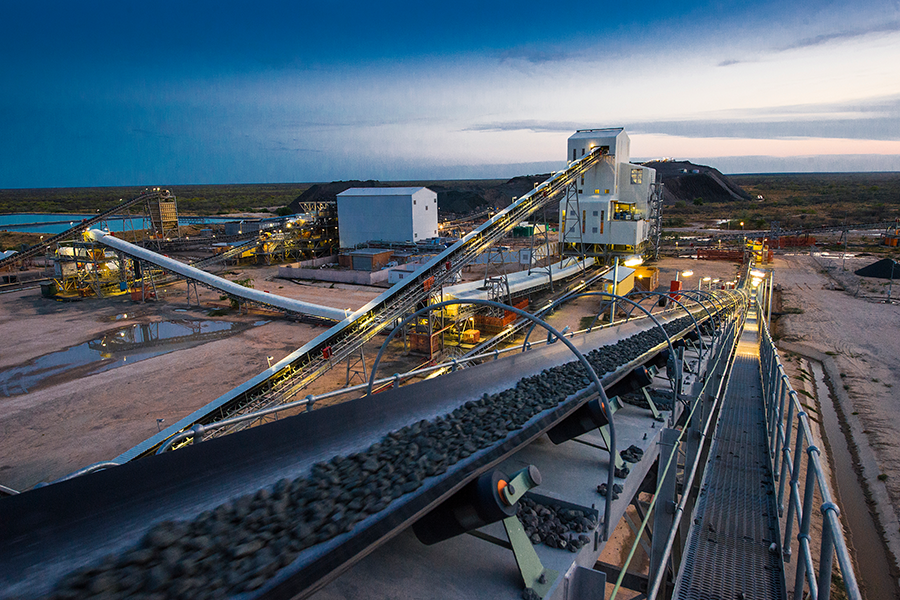
Mining Costs
From exploring potential diamond sources and purchasing those lands to the cost of heavy machinery and equipment and paying the wages of workers, the process of mining diamonds is very expensive. On average, miners sort through 200 to 250 tons of rock to produce a single one-carat gem-quality diamond. The mining industry’s operating expenses totaled $670 billion in 2022, according to a study by PWC.
And yet, no matter the amount of money a company invests into sourcing diamonds, there’s no guarantee they’ll find enough to stay afloat, creating a gambling situation for mining companies. In fact, diamond mines have a life expectancy of 15 to 40 years, on average, depending on their level of diamond production. Ultimately, if a mine cannot find enough diamonds to remain profitable, it shuts down. For example, the Argyle mine in Australia operated for nearly 40 years before it closed in 2020, and it was a primary source of pink diamonds. Now that the mine is closed, we can expect pink diamonds to climb in value until a significant new source is discovered.
Sorting
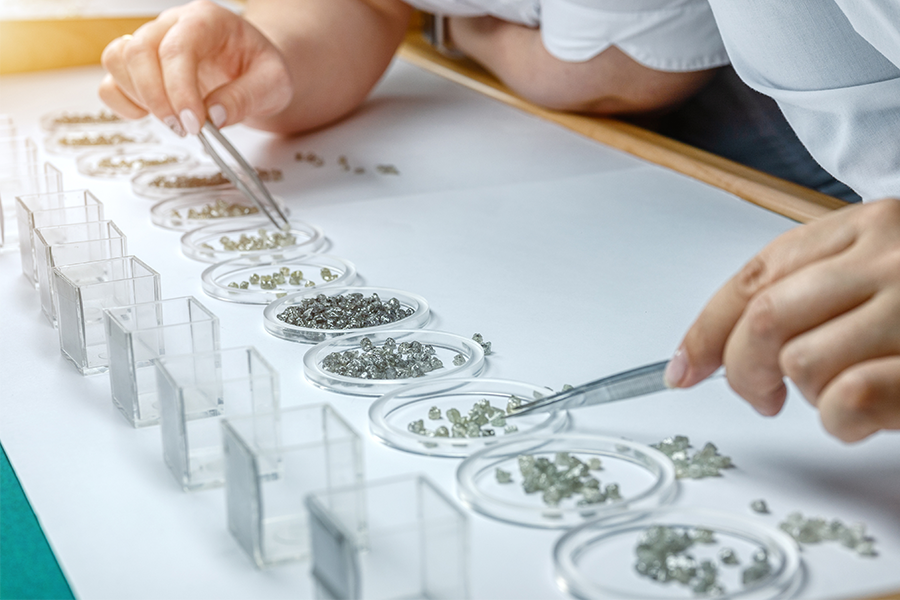
After workers mine rough diamonds, they sort them by size, which is measured in carat weight, as well as categories such as shape, quality, and color. At this point, workers identify which diamonds are gem-quality. The diamonds frequently pass through a trader’s hands before distribution to a master cutter, initiating the next phase in its expensive journey: the cutting and polishing process.
Cutting and Polishing
Unpolished diamonds have a rough surface and opaque appearance. In order to achieve that familiar sparkle, professionals must cut and polish a diamond. This requires studying the rough diamond to determine the best cut, which can potentially take a long time. Smaller diamonds can be cut quickly, while the largest rough diamonds can take years to plan and cut. The cost of cutting a diamond depends on carat weight and the complexity of the intended cut or shape.
The goal of a master cutter is to remove the least amount of material as possible while unleashing the beauty of a diamond. On average, a rough diamond loses up to 50% of its carat weight during the cutting and polishing process. That means a company can’t know a diamond’s profitability until it is cut and polished. Today, most professionals use advanced laser technology to cut a diamond, which is very expensive. The cost of this equipment, along with hiring and training an accredited diamond cutter, requires a lot of time and capital.
Are Diamonds Worth the Money?
The Most Expensive Diamond Cuts and Shapes
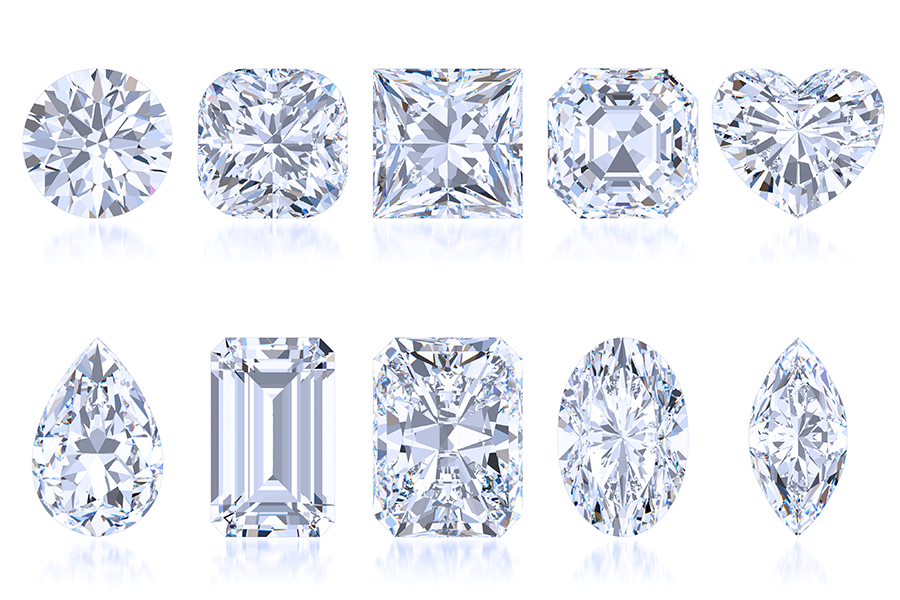
A diamond’s shape is its overall silhouette, and its cut refers to the orientation and size of its facets. The most sought-after diamond shapes include round, pear, oval, emerald, and heart.
A diamond’s shape and cut also contribute to its worth. The most expensive diamond cut is the round brilliant because of the material loss when cutting and polishing this shape and its high demand. In order to achieve this cut, a cutter must remove approximately 60% of the diamond’s carat weight, which is 10% more than other shapes. Step-cut diamonds, such as emerald-cut diamonds, are slightly less expensive than round diamonds.
Durability
Diamond is the hardest naturally occurring substance on Earth. That means they’re incredibly resistant to scratching and maintain their relative beauty over time. Only a diamond can scratch another diamond. That’s why companies grind industrial diamonds — diamonds that aren’t gem-quality — into diamond powder for polishing other diamonds. One reason why a “diamond is forever” is because it’s an incredibly durable gemstone, unlike some softer gemstones that chip or fracture more easily.
Resale
A diamond’s resale price can be significantly lower than what you originally paid for it. You will pay more for a signed ring from a well-known jewelry company than you would for an identical unsigned ring from a wholesale jeweler. Unless a ring has a very distinctive design or impressive provenance, you will likely only be able to sell the ring for the cost of the materials and lose what you paid in the brand’s markup. However, if you are selling a piece of jewelry that is recognizable on its own, like Cartier Tutti Frutti designs or certain eras of Bulgari jewelry, they can fetch a higher price because the design and provenance make it more valuable.
As a result, there’s a common misconception that diamonds are not worth as much as we think. While it’s true that when you buy a diamond at retail price, you’re paying the extra retail markup in addition to the market price, this alone doesn’t account for a low resale value. In reality, some cuts and colors maintain value better than others because of their high demand and low supply. In particular, fancy colored diamonds and gemstones with rare provenances, such as Colombian emeralds and Kashmir sapphires, are almost certain to increase in value because they’re especially covetable.
The Most Expensive Diamonds in the World
The world’s most expensive diamonds are large in size and have rare clarity and color grades such as internally flawless, fancy vivid color saturation, and Type IIa or IIb. These diamonds include pink and blue diamonds in astounding sizes, which are so rare that they’re practically miracles. Expensive diamonds have fetched exorbitant prices at auctions and are sometimes part of a country’s crown jewels.
The Cullinan Diamond
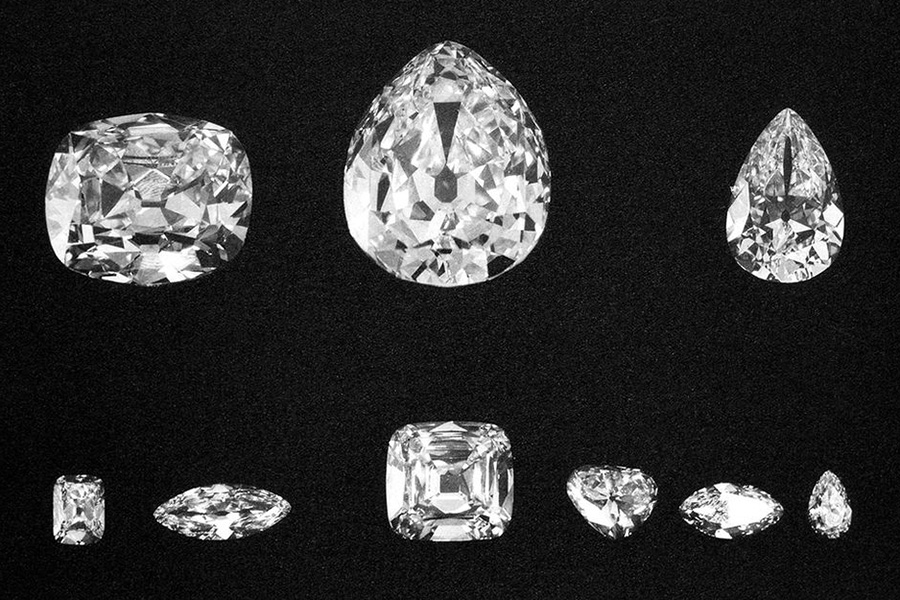
The Cullinan diamond is the largest diamond in the world and would be the most expensive if it were ever sold. The rough diamond weighed 3,106.75 carats and inspectors found it in 1905 at the Premier mine in South Africa. King Edward VII commissioned professionals to cut and polish the rough diamond, resulting in several smaller stones and two large gems: the 530.20-carat pear-shaped Cullinan I, the largest diamond, and the 317.40-carat cushion-cut Cullinan II. The monarch incorporated the Cullinan I, also known as the Great Star of Africa, into the Sovereign’s Sceptre with Cross, a component of the coronation regalia in the United Kingdom’s crown jewels. The diamond’s exact value is unknown, but the Sovereign’s Sceptre’s estimated worth is $400 million.
Koh-i-Noor
The Koh-i-Noor diamond is one of the largest cut diamonds in the world. It weighs 105.6 carats, and there is a debate about its exact provenance, although many presume that it originates from the famed Kollur mines in India. The earliest verifiable record of it is from Iranian ruler Nader Shah’s invasion of India in 1739, detailing the diamond as part of his loot. The Koh-i-Noor is currently part of the Queen Elizabeth the Queen Mother’s Crown. Its estimated worth is between $140 million to $400 million.
Pink Star
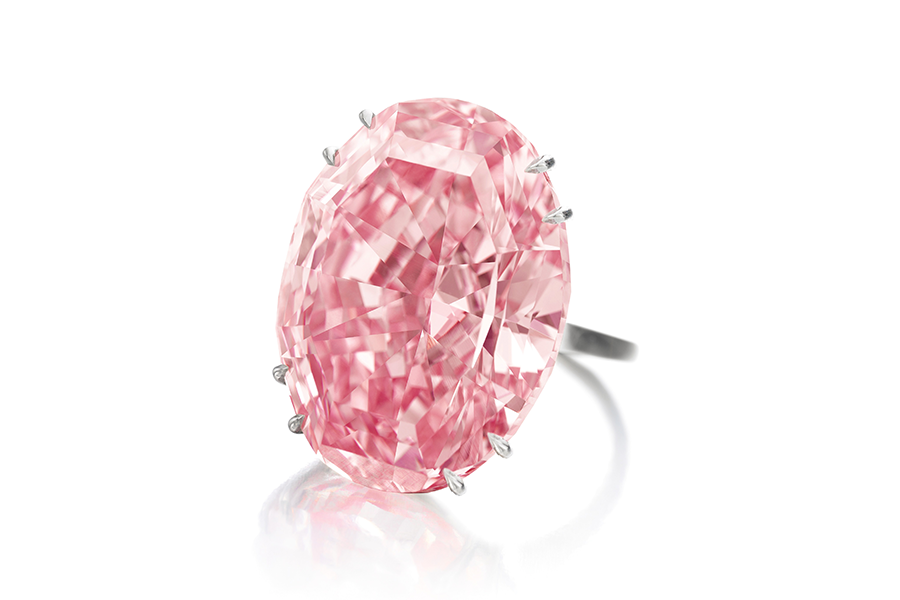
The Pink Star is the world’s most expensive diamond ring. It boasts a 59.60-carat oval-shaped fancy vivid pink Type IIa diamond, the largest internally flawless fancy vivid pink diamond in the world. As a Type IIa diamond, the Pink Star contains no measurable purities, making it especially rare for its size. It sold for $71.2 million at a Sotheby’s auction in Hong Kong in April 2017.
Centenary Diamond
The De Beers Centenary Diamond is a 273.85-carat D color modified heart-shaped diamond. Miners found the 599-carat rough diamond in 1986, and it is the third-largest diamond from the Premier mine. De Beers presented the rough diamond at its centennial celebration in 1988, hence the name Centenary Diamond. It cut and polished the diamond in 1991 and insured it that same year for over $100 million. It was on display at the Tower of London for several years, and the current owner of the diamond is unknown.
Oppenheimer Blue
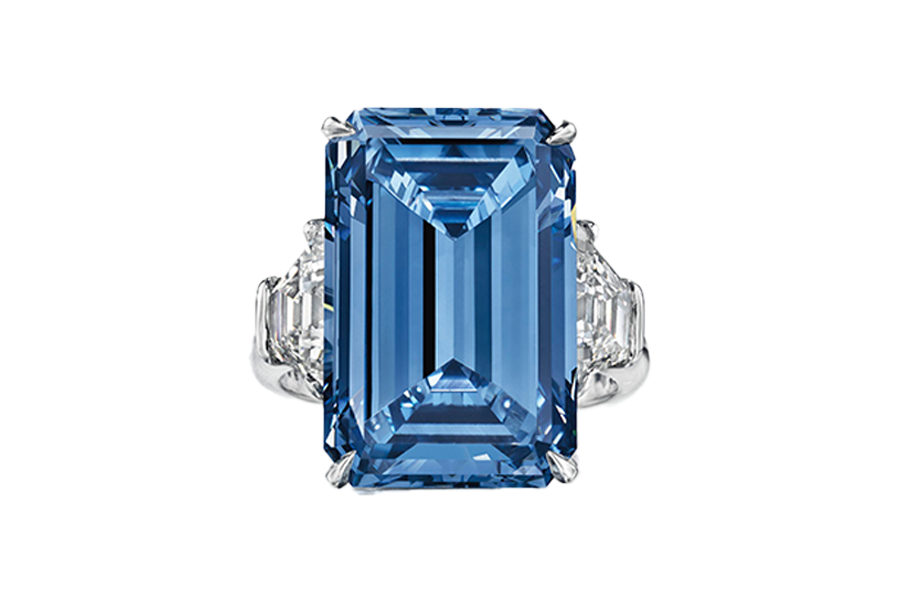
The Oppenheimer Blue diamond is a 14.62-carat rectangular-cut fancy vivid blue Type IIb diamond. Type II diamonds are extremely rare and known for their beautiful blue- and gray-toned appearance. Because blue diamonds make up 0.02% of all mined diamonds and only 10% of those diamonds weigh more than a carat, the Oppenheimer Blue is especially valuable. It fetched $57.5 million at a Christie’s auction in Geneva in May 2016.
Graff Venus
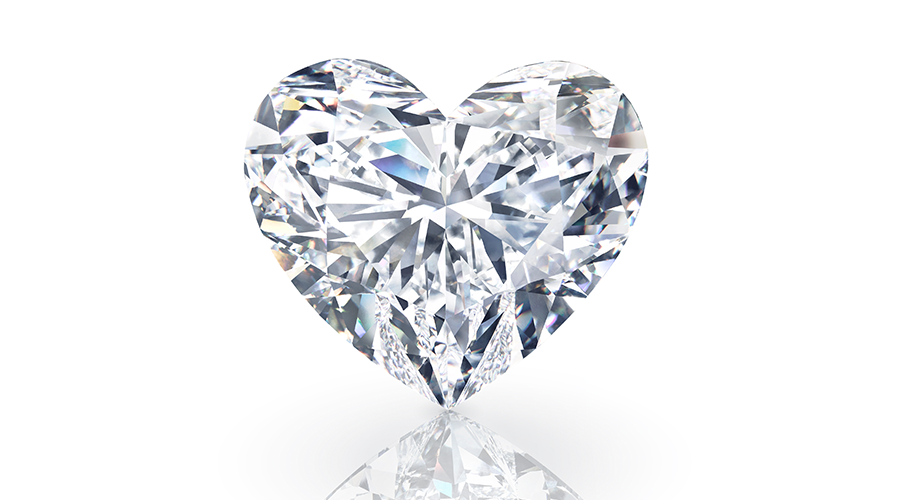
The Graff Venus is the largest heart-shaped diamond in the world, weighing 118.78 carats. Professionals cut the D color flawless Type IIa diamond from a 357-carat rough that miners discovered in 2015 in the Letšeng mine in Lesotho. The rough diamond, sold for $19.3 million, was so large and complex that Graff polishers developed new tools in order to execute the cutting process. Unsatisfied with a 118.88-carat internally flawless diamond, they reduced it by one-tenth of a carat and ultimately achieved the flawless, 118.78-carat heart-shaped diamond. The ultimate symbol of romantic partnership, its name refers to the Roman goddess of love.
Blue Moon of Josephine
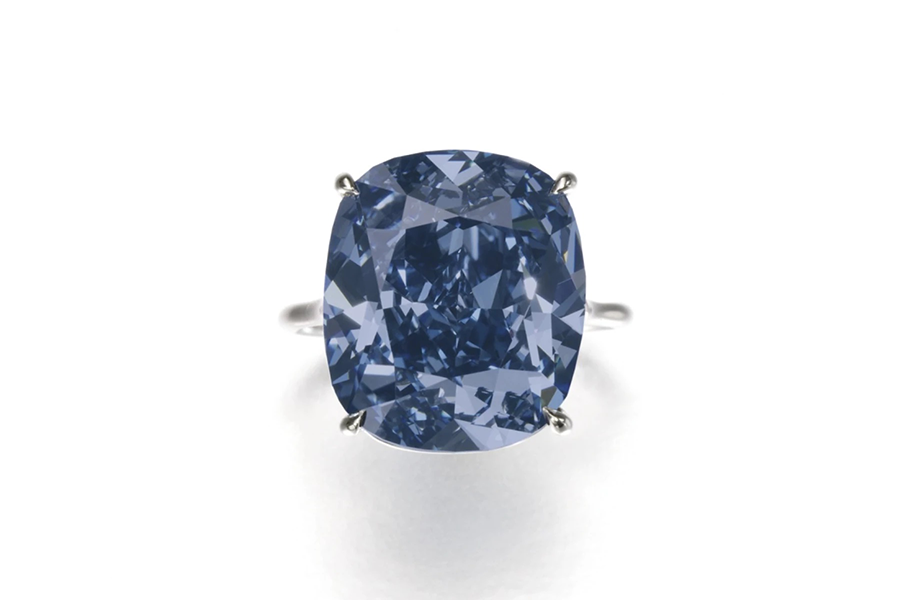
The Blue Moon of Josephine ring showcases a 12.03-carat cushion-cut fancy vivid blue diamond. Its owner, a Hong Kong businessman, renamed the internally flawless diamond from Blue Moon to Blue Moon of Josephine after his seven-year-old daughter. He won the bidding at $48.4 million at a Sotheby’s auction in November 2015.

